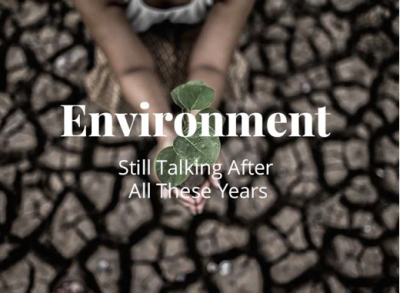Environment- Still Talking After All These Years

Still Talking After All These Years
In 1895, a Swedish scientist by the name of Svante Arrhenius approached the question of potential atmospheric warming due to the presence of heat-absorbing gases. It was a hobby for this Nobel Prize winner. His predictions, made with pen and paper, were nearly spot-on. Arrhenius was unambiguous regarding the reasons the climate would get warmer. The increases in carbon dioxide were due to the increased human activities of combustion processes and burning coal. He was not concerned with this warming and felt that it might even be sort of nice if the weather became warmer (remember he lived in Sweden). Now we know better.
So, 120 years later, we are still debating the issue in the face of mounting evidence that climate change is real and dangerous to all life on the planet. Over 97 percent of all scientific papers on the science of climate confirm that the changes in the atmosphere are primarily driven by human activity and that they are a threat to human society. The effect of continuing with the activities producing climate change will contribute to a constellation of impacts. There will be more droughts and heat waves (contributing to increased wildfires) and stronger hurricanes and increased flooding in some areas due to changes in the weather patterns.
Many plant and animal species are threatened as habitats change. These changes affect both land and sea life, leading to increased extinction of many species. There will be a rise in sea levels even if swift action is taken. One of the greatest natural factors to mitigate this warming trend and reduce atmospheric CO2 would be forests. The positive influence of forestland is diminished mostly by the clearing of land to grow feed for animals. This lessens the number of trees. In addition, dying trees release held CO2, further complicating the problem.
Reading the news today should cause anyone to think deeply about our human values. It is only June and already the El Nino weather patterns are developing in the Pacific Ocean. This is a consistent predictor of an extremely hot summer. Already forests are on fire in Canada. There are 428 wildfires burning down almost 4 million hectares of land. The smoke is making the air in many American cities, including New York, dangerous to breathe. Scotland is already on high alert and an area larger than the island of Gibraltar is burning in the Scottish Highlands. These events are the result of human actions, actions that can be changed with will and focus.
When we look at the effect of our food choices on climate change, the solution is obvious. Meat and all forms of animal agriculture are the most significant direct contributor to the problem. Livestock production accounts for up to 70 percent of all agricultural land use and 30 percent of the land surface of the planet. According to the United Nations, livestock contributes 18 percent of greenhouse gases and is a major contributor to both land and water degradation. The bottom line is that if you care about saving the environment and still have meat, fish, dairy, or eggs on the menu, you need to think again.
Using animals as a food source is short-sighted in terms of the environment, but so is eating most of the food produced by the international food giants. Agribusiness is a major polluter to both living and non-living systems in the environment. Those abiotic (non-living) factors include damage to soil through erosion; waste and pollution of groundwater, rivers, and lakes; and leaching of minerals from the soil.

